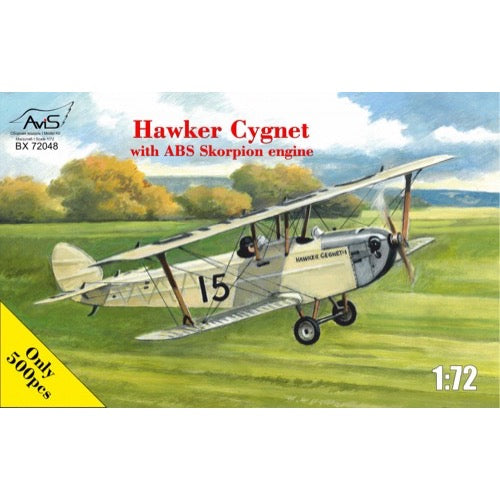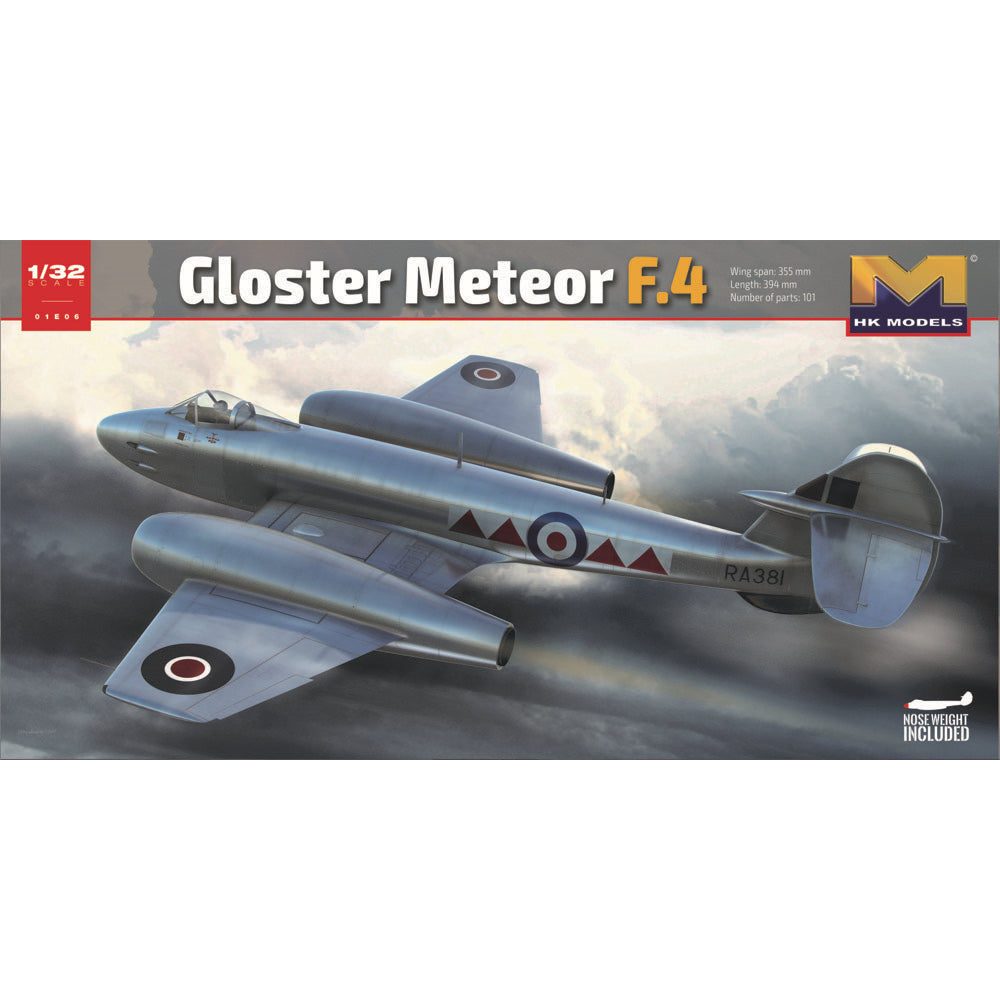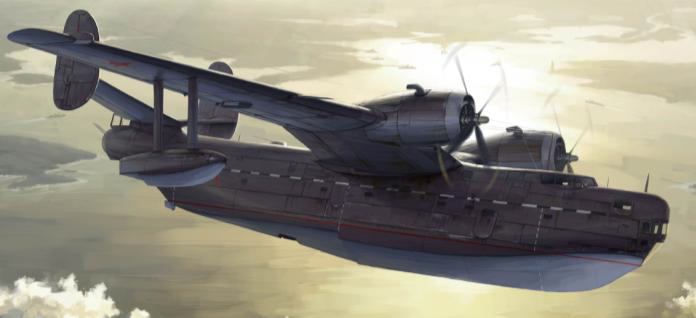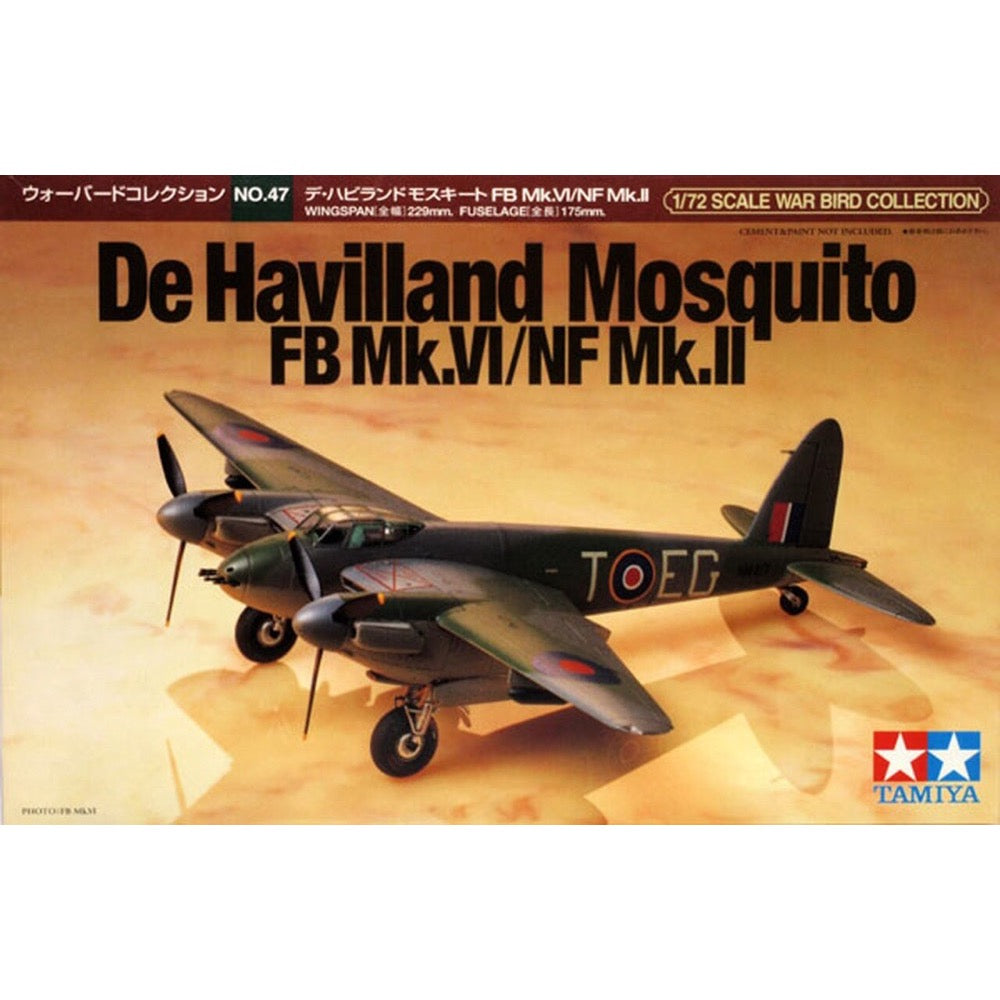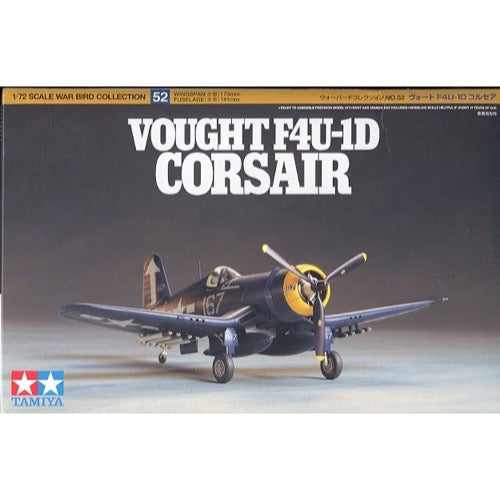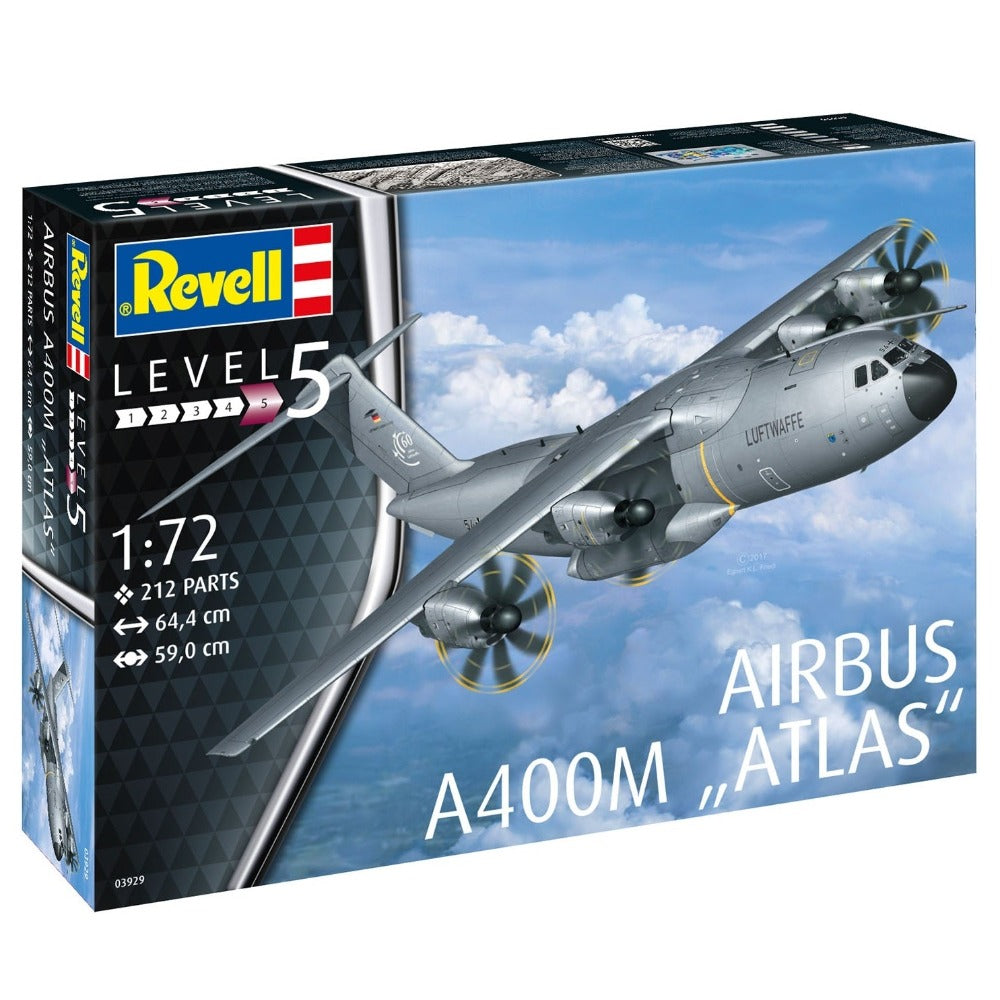
Revell 03929 1/72 Airbus A400M Atlas
64.00
$
<p>Model replica of the A400M, an all-new cargo and transport aircraft designed to meet the future needs of the Air Force.</p>
<h3>Features</h3>
<ul>
<li>
<p>Hull with countersunk sheet metal joints</p>
</li>
<li>
<p>Detailed cockpit with seats and instrument panel</p>
</li>
<li>
<p>Load compartment with structured floor</p>
</li>
<li>
<p>Detailed main landing gear area</p>
</li>
<li>
<p>2 propeller versions to choose from: flying position or resting position</p>
</li>
<li>
<p>Rear ramp optionally open or closed</p>
</li>
</ul>
<h3>Specifications</h3>
<ul>
<li>
<p>Age recommendation:14+</p>
</li>
<li>
<p>Number of parts:212</p>
</li>
<li>
<p>Length:644mm</p>
</li>
<li>
<p>Span:590mm</p>
</li>
</ul>
<h3>Authentic representation of the following versions</h3>
<ul>
<li>
<p>Airbus A400M, 54+03 "60 Years Air Force", LTG 62, Wunstorf, June 2016</p>
</li>
<li>
<p>Airbus A400M, 0014, F-RBAF "Ville de Colmar", ET 1/61, Olréans-Bricy 2017</p>
</li>
</ul>
<h3>Scope of delivery</h3>
<ul>
<li>
<p>Kit including building instructions and decal</p>
</li>
</ul>
<p> </p>
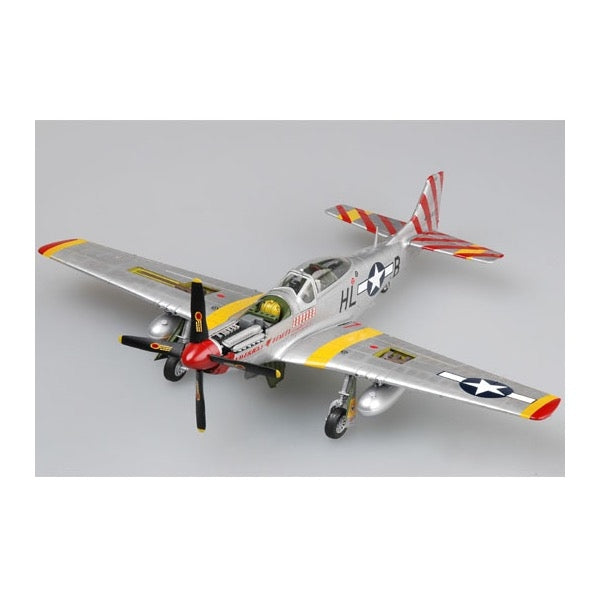
Trumpeter 02275 1/32 P-51D Mustang*
37.00
$
<p>The P-51 Mustang, designed in 1940 after Great Britain requested.Mustangs served in nearly every active combat zone, including the Pacific where they escorted B-29s from Iwo Jima to Japan. Between 1941 and 1945, the Army Air Force ordered 14,855 Mustangs (including A-36A dive bomber and F-6 photo-reconnaissance versions), of which 7,956 were P-51Ds with the "bubble" canopy and heavier armament. P-51Ds were play a interceptor and primarily for close support of ground forces Role. P-51s served with Reserve and National Guard units until 1957. </p>
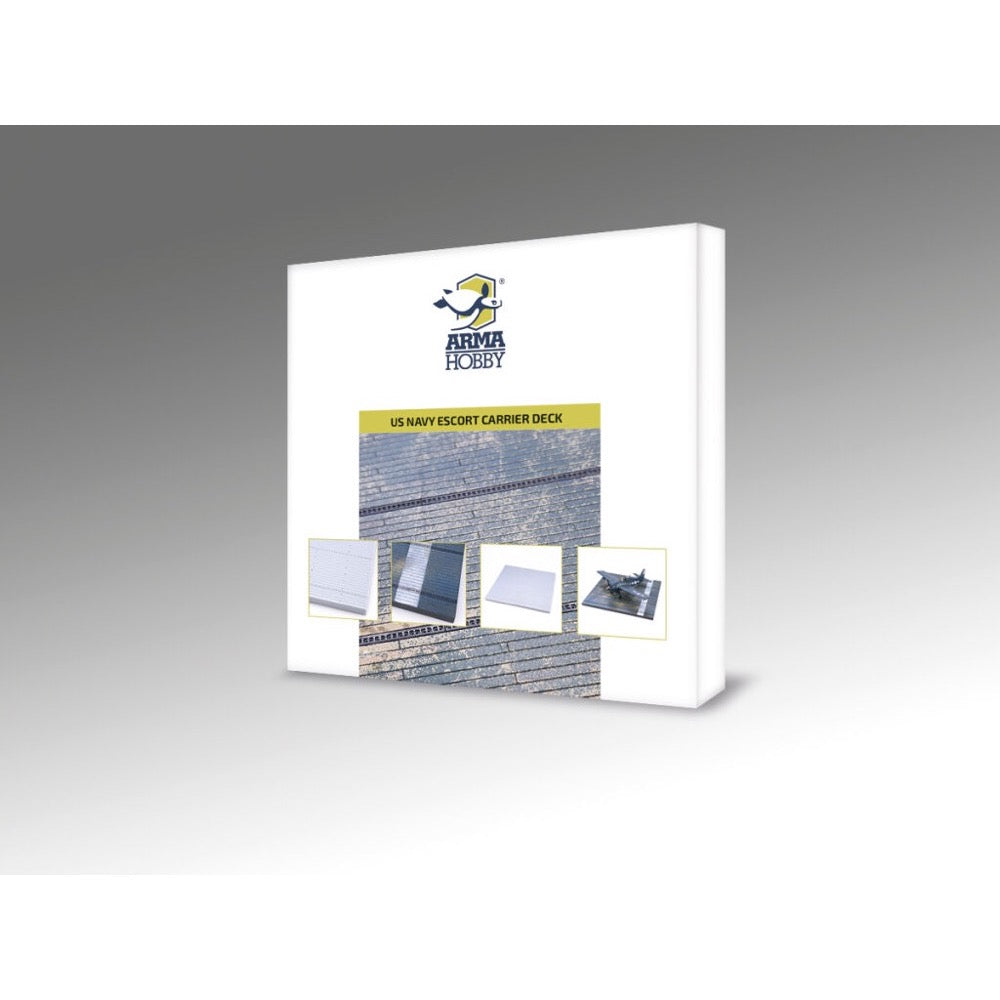
Arma Hobby 1/72 USN/RN Escort Carrier Deck
8.00
$
<h3>Allied Escort Aircraft Carrier Deck</h3>
<p>A universal and impressive 1/72 scale plastic model aircraft base that accurately reproduces a section of the deck of an escort aircraft carrier. Matches all the basic historical types of US-made escort carriers of World War II, used massively, also by Great Britain, in the Atlantic, Pacific, Indian Ocean, Mediterranean and in Arctic convoys. Included is a link to a free download of files to self-printing on a 3D printer accessory parts: arrestor cable mounts, different versions of wheel chocks, a bomb carriage. Once painted and possibly accompanied by pilot and crew figures, it makes an attractive and easy-to-make diorama.</p>
<h3>Escort aircraft carriers</h3>
<p>Escort aircraft carriers, although smaller and less heavily armed than “real” fleet aircraft carriers, played no less a decisive role in World War II at sea. They helped win the Battle of the Atlantic against German u-boats, while in the Pacific they provided massive air support for the Marines' landing operations to subsequent islands, both fighter cover and assault operations against ground targets.</p>
<p>The vast majority of escort carriers, both on British and US orders, were built in US shipyards. Mass and rapid production was made possible by basing the design on existing cargo ship designs and even on finished hulls. By the end of the war, their number - hard to believe - had reached about 130, in five basic types: Long Island, Bogue, Casablanca, Sangamon and Commencement Bay, as well as their transferred Royal Navy counterparts, named the Ruler and Attacker types.</p>
<h3>Fighters and torpedo-bombers</h3>
<p>On escort carriers, due to their small size, composite air squadrons consisting of fighters and bomber/reconnaissance/torpedo aircraft were usually stationed. The Americans primarily used Wildcats and Avengers, while the British used Sea Hurricanes or Martlets/Wildcats (less often Seafires) in teams with Swordfish or Tarpon/Avengers. In addition, in the Pacific, escort carriers brought new aircraft from US factories to the front, both naval (e.g., Hellcats, Corsairs), as a supplement to carrier-based squadrons or Marines, and fully land-based aircraft such as the P-51 Mustang, P-38 Lightning, P-39 Airacobra, P-40 and many others. In the final period of the war, British ships also carried out similar tasks, it even happened that they transported a bomber squadron equipped with twin-engine Mosquitoes to Australia.</p>
<h3>Equipment and camouflage</h3>
<p>The typical escort carrier deck of all major types looked the same: it was covered with solid planks, separated by distinctive metal strips with hooks for anchoring aircraft. The planks were usually stained in camouflage colours, depending on the period and the country using the ship. Intensive use and weathering meant that the colours of the deck were very varied, giving excellent opportunity for the modeller wishing to demonstrate his skills in weathering. Also universal was the equipment provided in the kit in the form of free files for self-printing on a 3D printer: arrestor cable mounts, British and American versions of wheel chocks, bomb carriage.</p>
<p><em>Attention! Aeroplane kit not included!<br><br></em><em>The product is available in the form of 3D files in STL format. It is a universal format for sharing 3D printable files.</em></p>
<h3>Set includes</h3>
<ul>
<li>arrestor cable mounts,<br>
</li>
<li>British and American versions of wheel chocks,<br>
</li>
<li>bomb cart</li>
</ul>
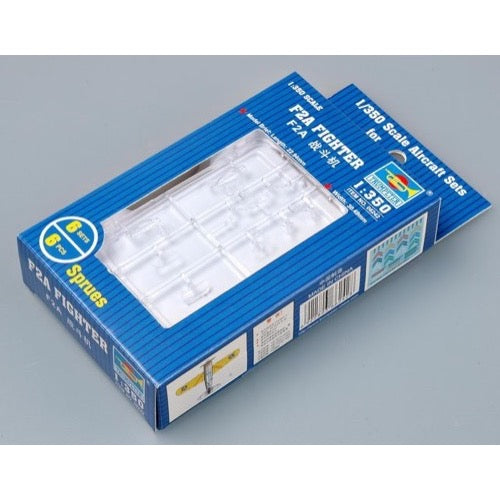
Trumpeter 06242 1/350 F2A Buffalo Fighter
3.00
$
<h3>The Brewster F2A Buffalo is an American fighter aircraft which saw service early in World War II.</h3>
<p>Designed and built by the Brewster Aeronautical Corporation, it was one of the first U.S. monoplanes with an arrestor hook and other modifications for aircraft carriers.</p>
<h3>Specifications</h3>
<ul>
<li>
<p>Total Parts: 54pcs</p>
</li>
<li>
<p>Total Sprues: 6pcs sprues</p>
</li>
<li>
<p>Model Brief: Length: 22.94 mm, Width: 30.49 mm</p>
</li>
<li>
<p>Paint Schemes: US NAVY</p>
</li>
</ul>

Heller HLL58391 1/72 Super Constellation TWA Starter Kit
58.00
$
<p>Developed from the L-749, the L-1049 Super Constellation first appeared in 1950. The transformation undergone by the L-749 was the longest extension ever made to a propeller airliner. The insertion of fuselage sections increased the length by 5,59 m. Other important modifications were the complete reinforcement of the airframe and the fitting of rectangular portholes, the increase of tank capacity and the installation of new engines. The first L-1049 was put in service on December 15th, 1951 by Eastern. TWA and Eastern Air Lines had the largest fleets of "Super Connie“ aircraft.</p>
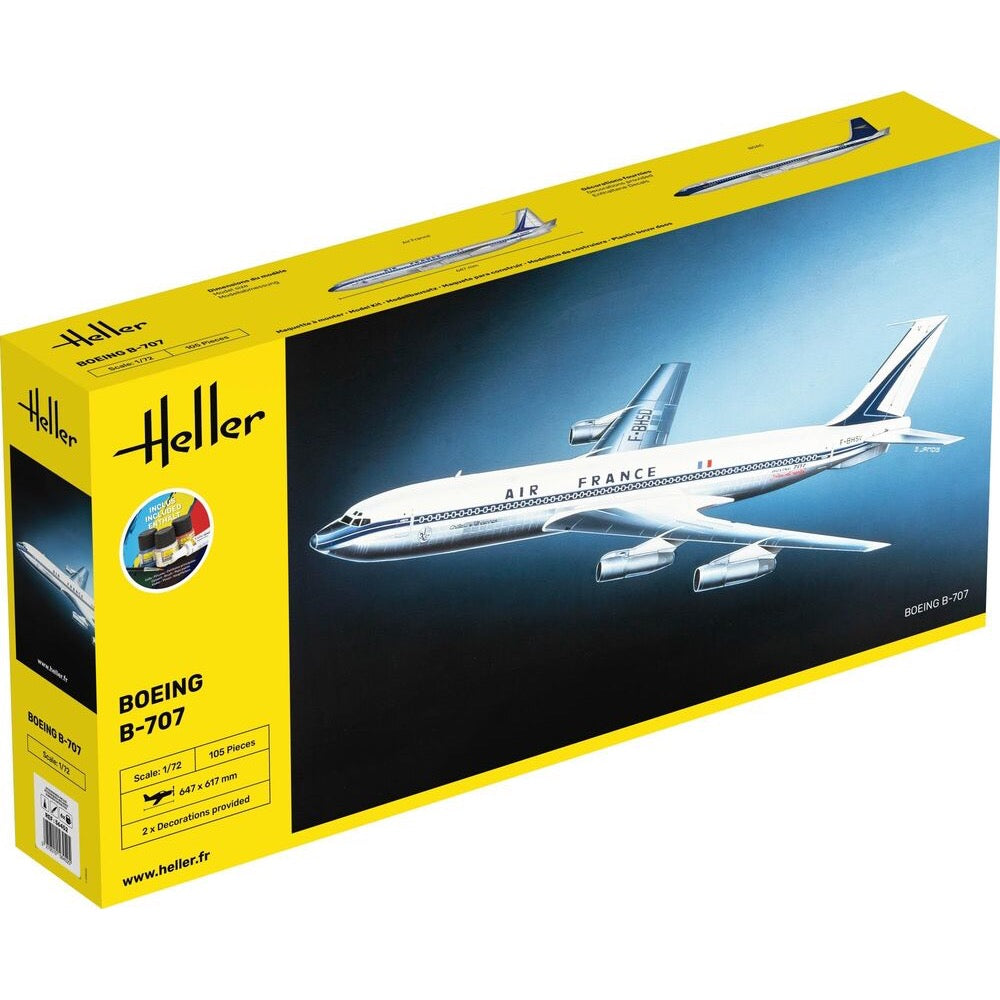
Heller HLL56452 1/72 B707 Air France Starter Kit
58.00
$
<p>In 1950, the Boeing company began to study a four-engine aircraft with both civilian and military applications. On 14 May 1954, the Boeing factory in Renton produced a 367-80 which made its first flight on 15 July. This prototype will be used for the joint development of the KC-135 in-flight refuelling aircraft and the well-known Boeing 707 civil aircraft. On 15 October, Pan American ordered its first six jets, Boeing 707-121s. Subsequently, the Boeing 707 was developed in parallel with the different military C 135 and 137 versions, to give the 200 series, then the 300 series, which are very different. Built in nearly 1000 units, the Boeing 707 embodies the beginnings of contemporary air transport. Solid and reliable, this aircraft was very popular with both its crews and passengers. They were normally designed to accommodate 134 passengers in two classes. Air France‘s Boeing 707s have been named after castles. The „Château de Vincennes“ was the second of the 29 ordered by the French national airline.</p>
<h3>Specification</h3>
<ul>
<li>Scale: 1:72</li>
<li>Parts: 105 pieces</li>
<li>Packaging: 335 x 665 x 100 mm</li>
</ul>
<h3>Includes</h3>
<ul>
<li>Cement</li>
<li>Brush</li>
<li>Main paints</li>
</ul>
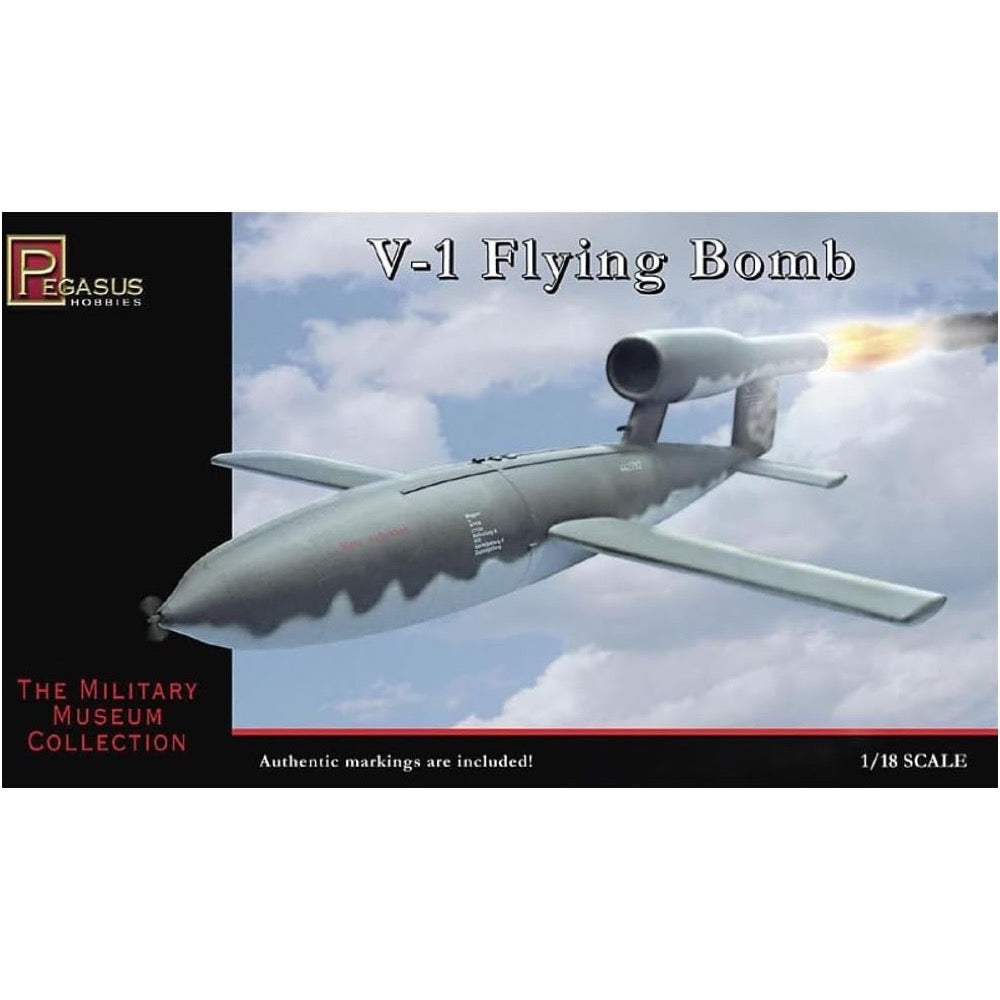
Pegasus 1/18 German V-1 Flying Bomb
17.00
$
<p>A manned version of the V1 missile, Fieseler Fi 103R Reichenberg IV, intended for suicide attacks on Allied aircraft and selected targets. The suicide flight program was planned to be implemented at the end of the war in 1945. Officially, the German military authorities used the term "ramming", however, the possibility of getting the pilot out of the rocket was practically non-existent, due to the high speed and the fact that the cockpit cover was located just below the jet engine inlet, additionally tilting only 45 degrees, which made it impossible to quickly lower the rocket. cabin by the pilot and landing on a parachute. In total, 70 pilots were trained and 175 Fieseler Fi 103R Reichenberg IV machines were produced, but their practical application on the battlefield was never achieved. The Fieseler Fi 103R Reichenberg IV missile itself was almost identical to the Japanese Yokosuka MXY7 Okha, used by Japanese suicide pilots, with the difference that the Japanese pilot's cockpit was screwed down, preventing the missile from leaving during the flight, while the cockpit in the German missile gave a theoretical chance to escape, although in practice not feasible. </p>


